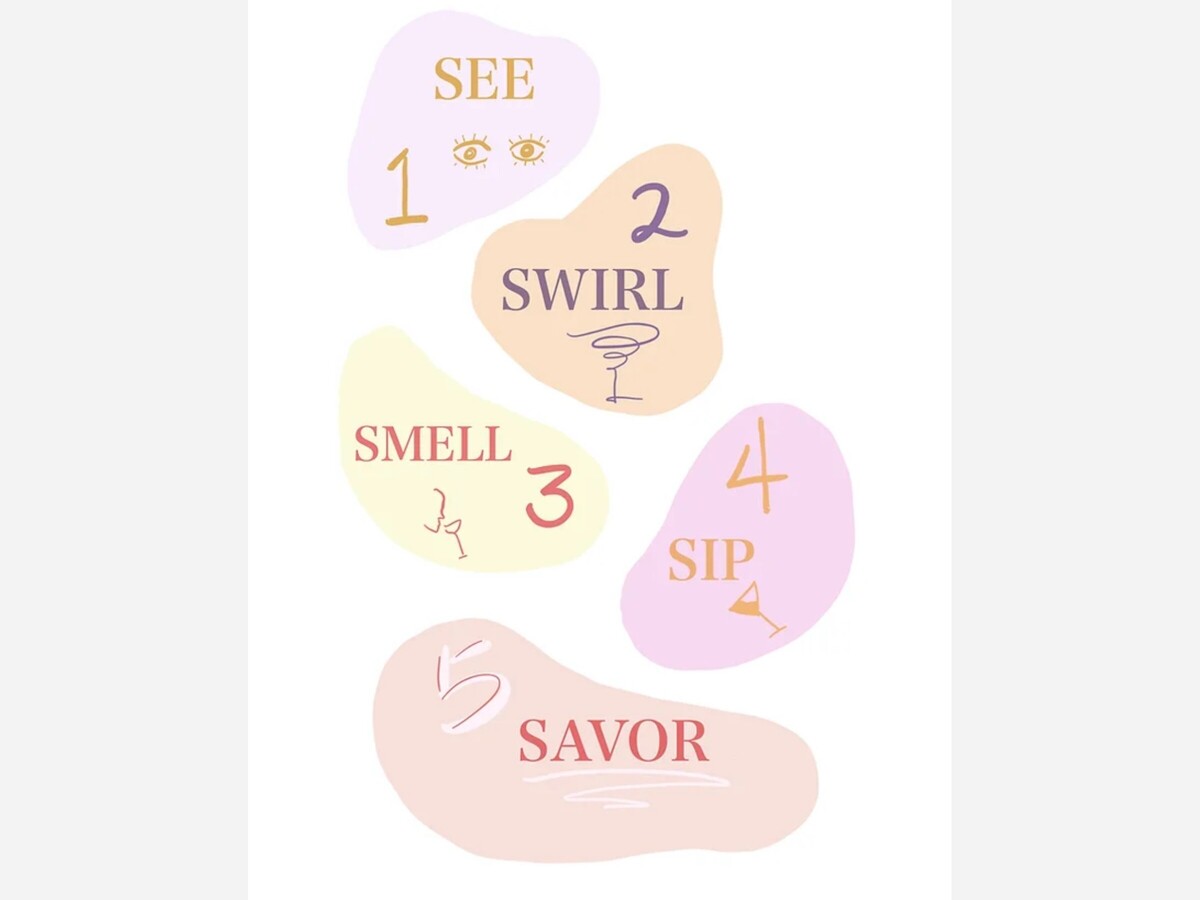Image

Journalist, Chris Edwards of AlamogordoTownNews.org spent over 25 years in the wine industry and worked with some of the greatest wine producers in North America over his decades in the business. From mentoring by columnist and food, wine and entertainment critic L Pierce Carson who he traveled the world with, to mentoring opportunities with pioneer, Robert Mondavi, and others; the culture and passion of wine is now a part of our life experience, even in New Mexico.
With that in mind, we are introducing a new series, the Alamogordo Wine Chronicles. In this series we will teach, review and explore the world of wine. Today's topic the 5 S’s of Wine Tasting...
See - The color of the wine can be a good indicator of its variety, whether it was aged in oak, and the concentration and body of the wine. We are primarily looking for clarity, intensity and color.
Smell - When you smell a wine, you are trying to detect the different notes that make up the aroma, but you first need to check if the wine has a fault or has any off aromas. There are three main types of smells that you will smell in wine: primary aromas, secondary aromas and tertiary aromas.
Primary aromas are the smells that you will smell in the grape itself and from the primary fermentation. These include fruity smells like strawberry, apple, as well as floral scents like rose and honeysuckle.
Secondary aromas are those originating from the post-fermentation wine making process, such as from the yeast or oak and include the aroma of brioche or vanilla.
Tertiary aromas are the smells that you will detect in the wine after maturation. These include earthy smells like mushroom and tobacco, as well as fruit development smells, like fig and exotic spice, like cinnamon.
Swirl - the art of the swirl. Swirling the wine is important because it allows you to smell the aromas more accurately. When you swirl the wine, it causes the surface of the wine to move. This movement creates tiny bubbles that release the aromas and flavors of the wine. The more you swirl the wine, the more aromas and flavors will be released. This way, you can smell all the different aromas that make up a particular vintage of a Pinot Noir or a Merlot, for example.The easiest way to swirl is to leave the glass on the table and move it in a steady circular motion.
Sip - When you sip the wine, you are allowing it to coat your entire tongue and palate and to expose your taste buds and mouth to all the nuances of flavor and texture. You can also evaluate the wine’s body, acidity, sweetness and tannins and whether it is in balance. By sipping the wine, you can determine the mouthfeel of the wine, as well as whether or not you like it.
It is also important to note the texture of the wine. Is it light and refreshing, or is it heavy and full-bodied?
You are looking for an alcohol taste or sensation (the back or your mouth will feel warm) and how long it lingers in your mouth and throat. This can be short, medium or long. Believe it or not, some wines linger for over a minute. This is called the finish.
Savor - When you savour the wine, you are giving it time to digest. This allows you to taste the flavours and aromas more distinctly. You can take the time to assess the wine’s qualities and maybe take a guess on its provenance from all the sensations you have identified.
When you take the five s’s of wine tasting into account, you will have a much better understanding of what you’re tasting. We hope you enjoyed our first of many lessons! Now grab a bottle and let's savour the moment!